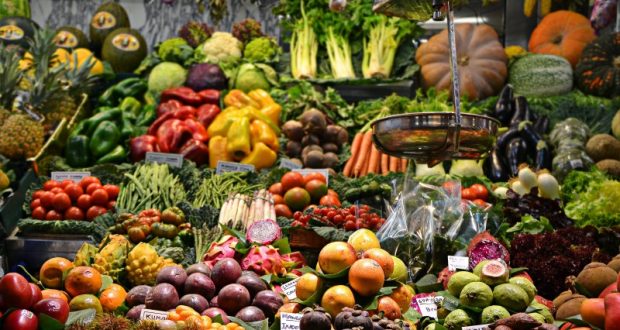By UC Master Gardeners of Mariposa County
Beginner vegetable gardeners are often stymied about what vegetables to grow in their gardens. The general rule of thumb is to pick easy-to-grow varieties that you enjoy eating.
California has a unique Mediterranean climate that is suitable for growing many types of vegetables throughout the year. In cooler northern climates, most crops are grown in the late spring and summer. California gardeners usually divide crops by cool season vegetables and warm season vegetables. Cool season vegetables prefer average temperatures between 55ºF and 75ºF and can often tolerate a slight frost.
In California, these vegetables are grown as early as possible in spring or started in late summer for a fall harvest. Cool season crops are generally considered “true” vegetables in that the leaves, stems, roots, and flowers are harvested. Many root vegetables like beets, carrots, parsnips, radish, and turnips are cool season crops.
Leafy vegetables such as cabbage, celery, kale, lettuce, and spinach are also usually cool season crops since they quickly bolt in the hot California summer. Alliums such as garlic and onions are also considered cool season crops as are asparagus, broccoli, cauliflower, artichokes, peas and potatoes.
Warm season vegetables prefer average temperatures between 65ºF and 95ºF and generally die off at the first sign of frost. Warm season vegetables can take the California heat, but often prefer afternoon shade or shade cloth when temperatures rise above 95ºF. These are California classics—tomatoes, tomatillos, peppers, eggplant, okra, melons, squash, corn, and beans. With warm season crops, it is generally the mature or immature fruit that is harvested. These annuals are easier to often easier to grow than cool season vegetables but do not hold as much food value (they are less nutritionally dense).
 There are some brief caveats to successfully growing vegetables. You don’t need a huge space. Consider growing vertically on a trellis, in cages, on a fence, or some other support as much as possible. Amend the soil with compost and fertilizer suitable for your chosen varieties. Water regularly, paying attention to the weather. Mulch to conserve water and reduce weeds. Check seed packets, catalogs, and seed company websites for growing tips. Pick produce regularly when ripe. Can or freeze excess produce or give to Plant-a-Row.
There are some brief caveats to successfully growing vegetables. You don’t need a huge space. Consider growing vertically on a trellis, in cages, on a fence, or some other support as much as possible. Amend the soil with compost and fertilizer suitable for your chosen varieties. Water regularly, paying attention to the weather. Mulch to conserve water and reduce weeds. Check seed packets, catalogs, and seed company websites for growing tips. Pick produce regularly when ripe. Can or freeze excess produce or give to Plant-a-Row.
Seed catalogs are excellent sources of information on picking vegetables you may want to grow. Now is the time to start planning for spring and getting those seeds ordered!
————————————————————————————-
UC Master Gardeners of Mariposa County serve Mariposa County, including Coulterville, Greeley Hill and Don Pedro. For gardening and event information, call 209-966-7078 or e-mail mgmariposa@ucdavis.edu.
Find us online at http://cemariposa.ucanr.edu/Master_Gardener, on Facebook (UC Master Gardeners of Mariposa County), and on YouTube at “UCCE Mariposa.” Listen to us on KRYZ 98.5 FM radio Wednesdays at 2 p.m. and Saturdays at 5 p.m.





